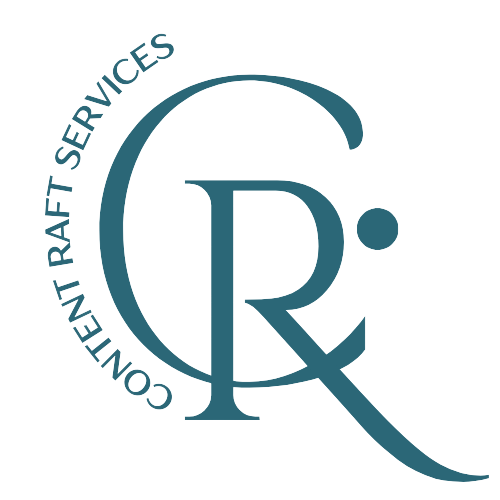
What is Content Marketing?
Content marketing is the strategic approach of creating, publishing, and distributing valuable, relevant, and consistent content to attract and retain a clearly defined audience. The ultimate goal is to drive profitable customer actions by nurturing potential customers through engaging and informative content.
This strategy includes various content formats such as blog posts, videos, social media updates, infographics, podcasts, and even offline content like brochures or magazines. Unlike direct advertising, content marketing focuses on delivering value to users by informing, educating, and engaging them rather than overtly promoting products or services.
By consistently offering valuable content, businesses can establish credibility, build trust with their audience, and position themselves as industry leaders. A great example is The Motley Fool, a financial services company that provides extensive free content to attract users, who then subscribe to their premium stock market and financial advice services.
Benefits of Content Marketing
Content marketing offers multiple benefits that can help businesses grow and establish strong customer relationships. Here are some of the key advantages:
- Increases Brand Awareness: By producing high-quality content, you make your brand more visible to potential customers, positioning yourself as an authority in your industry.
- Enhances Audience Engagement: Providing valuable content fosters engagement, helping you build lasting relationships with your audience.
- Boosts SEO and Search Rankings: Optimizing your content for search engines can increase your organic traffic, making it easier for potential customers to find your business.
- Drives Lead Generation: High-quality content attracts potential customers who are interested in your products or services, increasing conversion rates.
- Provides Cost-Effective Marketing: Unlike traditional advertising, which has a short lifespan, content marketing generates long-term benefits by creating evergreen content that continues to attract audiences over time.
Companies like HubSpot, Dollar Shave Club, and NPR have successfully used content marketing to generate brand awareness, engage their audience, and convert users into loyal customers.
Get Content Marketing Services in UAE
Different Types of Content
Content marketing includes various formats that cater to different audience preferences. Here are the most popular types:
- Written Content: Articles, blog posts, case studies, whitepapers, and eBooks.
- Visual Content: Infographics, charts, and images that simplify complex information.
- Video Content: Webinars, tutorials, explainer videos, and live streaming.
- Audio Content: Podcasts, interviews, and audiobooks.
- Interactive Content: Quizzes, surveys, polls, and interactive tools.
- Social Media Content: Posts, tweets, LinkedIn articles, and Instagram stories.
- User-Generated Content: Reviews, testimonials, forum discussions, and community engagement.
For example, Zapier built its content marketing strategy around an SEO-optimized blog, which helps them attract millions of organic visitors monthly. Similarly, NPR’s podcast Serial is a prime example of how audio content can captivate an audience.
Steps to Start Content Marketing
1. Identify Your Target Audience
Understanding your audience is the foundation of a successful content marketing strategy. Define your ideal customer by considering their demographics, pain points, and preferences. You can use tools like Google Analytics, customer surveys, and social media insights to create detailed customer personas.
For example, Twilio recognized that product managers and team leaders were key decision-makers for their software and tailored their content accordingly.
2. Define Your Content Marketing Goals
Establish clear objectives for your content marketing efforts. Common goals include:
- Increasing brand awareness by publishing informative blog posts.
- Generating leads by offering valuable resources like whitepapers and webinars.
- Establishing thought leadership by sharing industry insights and expert opinions.
- Driving website traffic through SEO-optimized content.
- Improving conversion rates by crafting compelling content that aligns with customer needs.
For instance, SurferSEO focuses on educational blog posts to help users optimize content for search engines, driving traffic and conversions.
3. Choose the Right Content Format
Select the most effective content type based on your target audience’s preferences.
- If your audience enjoys long-form content, focus on blogging.
- If they prefer visual learning, invest in videos and infographics.
- If your audience consumes content on the go, consider launching a podcast.
4. Research Relevant Topics
Keyword research and audience insights can help you find trending and valuable content topics. Use tools like SurferSEO, Ahrefs, or Google Trends to discover high-demand topics. Additionally, analyze your competitors’ content to identify gaps and opportunities.
For example, the topic time management has multiple subtopics that can be explored in-depth for blog posts, guides, or videos.
5. Create a Content Calendar
An editorial calendar helps organize and schedule content creation. Define:
- The type of content you will create.
- Posting frequency (daily, weekly, or monthly).
- Publishing deadlines and assigned responsibilities.
This ensures consistency and efficiency in your content marketing strategy.
6. Produce High-Quality Content
Content quality plays a crucial role in attracting and retaining your audience. Follow these best practices:
- Ensure content is well-researched, accurate, and free from errors.
- Use compelling visuals and storytelling to enhance engagement.
- Maintain a consistent brand voice across all content formats.
For example, at SurferSEO, content undergoes rigorous vetting to ensure high value for readers before publication.
7. Promote Your Content
Creating great content is just one part of the equation—promotion is equally important. Effective ways to distribute content include:
- Sharing on social media platforms like LinkedIn, Twitter, and Facebook.
- Leveraging email marketing to reach subscribers.
- Engaging with influencers and guest posting on relevant blogs.
- Optimizing content for SEO to improve search rankings.
A good example is Brian Dean of Backlinko, who significantly boosted his traffic by reaching out to SEO influencers after publishing a blog post.
8. Measure and Optimize Your Results
Tracking your content’s performance is essential for ongoing improvement. Key metrics to monitor include:
- Website traffic and user engagement.
- Conversion rates and lead generation.
- Social media shares and comments.
- Search engine rankings.
Use analytics tools like Google Analytics, SEMrush, or HubSpot to assess your content marketing efforts. Based on the insights, refine your strategy to achieve better results.
Conclusion
Content marketing is a powerful strategy that helps businesses attract, engage, and convert their target audience. By following this step-by-step guide, you can develop a solid content marketing plan that enhances brand visibility, builds trust, and drives business growth.
Start by understanding your audience, defining clear goals, selecting the right content format, and consistently producing valuable content. Promote your content through various channels, track your progress, and refine your strategy for long-term success. With a well-executed content marketing plan, you can establish your brand as an authority in your industry and achieve sustainable growth.
